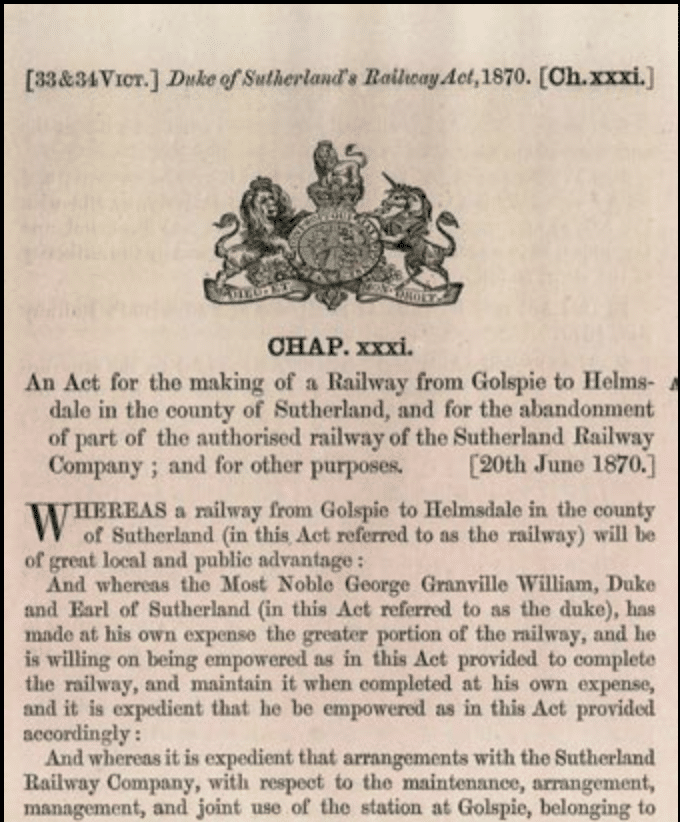Following The Train Line North to The Scottish Highlands
If you are anything like us, the journey is almost as important as the holiday itself, and we are pretty proud of the stunning vistas and landscapes you experience on your way to visit our holiday cottages in Sutherland. What many people don’t realise is that there is no need to jump behind the wheel of your car, in fact, there is a far more environmentally friendly (and in our opinion romantic) way to travel, and that is by train to the UK’s only privately-owned train station – Dunrobin Castle Station.
Dunrobin Castle Station was built as, and remains the private railway station of the Sutherland family, and is situated at the top of the Dunrobin Castle drive, a five-minute walk to the Castle or a quick bike ride into Golspie.
The station is served by Scotrail trains on the Far North Line, which runs from Inverness to Thurso and Wick. The station is open from 1st April-15th October, which coincides with Dunrobin Castle’s open season.
Although there were once several privately-owned train stations in the UK, most of them closed in the 1960s, but Dunrobin Castle Station remains in regular use by tourists and locals alike! The station is a request stop, so make sure you let the train guard know where you want to disembark or give the driver a good wave as the train approaches the platform.

The Station's History
The railway line in the far north of Scotland was created in phases in the 1860s, the first section reaching Golspie in 1868. However, the 3rd Duke of Sutherland saw great social value in providing a railway line from Dunrobin Castle to Helmsdale and, as such, decided that he would fund it privately. The Duke of Sutherland’s Railway Act received Royal Assent in parliament in 1870 – an original copy of the Act in the station museum.
The Duke of Sutherland’s Railway opened on the 1st November 1870 and was 14 ½ miles long. Both ends of the line were temporary termini: In the north, a station was built at West Helmsdale, just short of the village, and in the south, the line terminated at Dunrobin just a mile from the rest of the railway system at Golspie.
On 14th June 1871, the Highland Railway finally completed the missing link between Golspie and Dunrobin, connecting Helmsdale to Inverness. The Duke’s engine and two carriages were used for personal journeys to Inverness, with the carriages attached to southbound trains for more southerly destinations. The Sutherland family retained the right to run their train until railway nationalisation in 1948.
On 14th June 1871, the Highland Railway finally completed the missing link between Golspie and Dunrobin, connecting Helmsdale to Inverness. The Duke’s engine and two carriages were used for personal journeys to Inverness, with the carriages attached to southbound trains for more southerly destinations. The Sutherland family retained the right to run their train until railway nationalisation in 1948.
When the link between Dunrobin and Golspie was complete, Dunrobin Caste Station was closed to the public, and a new Arts and Crafts style station building was erected in 1902. It was designed by the estate architect L. Bisset. The Duke’s waiting room, as it is now known, contains a railway museum that displays many artefacts from the Highland Railway and its successors.
In 1965 the station was formally closed as part of the Beeching rationalisation plan for Britain’s Railways, however as visitor numbers to Dunrobin Castle began to rise and trains still running through the station, it was reopened in 1985 by the Countess of Sutherland and remains operational today.
For more information about the station and its history, visit the station’s website.
Dunrobin Castle Station is a 30-minute walk (or short cycle) from Bluebell and Snowdrop Cottages and with incredible mountain biking available at Wildcat Highland Trails and easy access to the beach and surrounding walks, why not ditch the car altogether and embrace a greener approach to holidaying!
Explore
The Great Gardens of the Scottish Highlands
The Scottish Highlands is home to some of Scotland's most stunning Gardens, from Dunrobin Castle to Ardtornish, we…
The Best Walks in the Scottish Highlands
We explore some of the best walks in Sutherland, Scottish Highlands, from coasts and hills to rivers and lochs.
World Famous Whiskies on our Doorstep
Discover some of the best whiskies in the world, on your Scottish Highlands holiday







